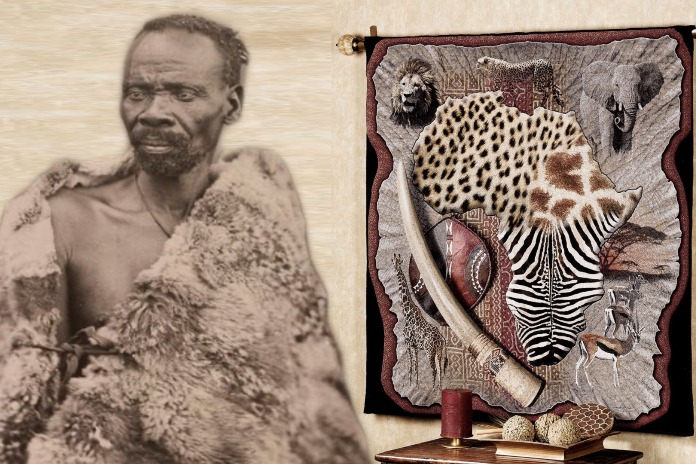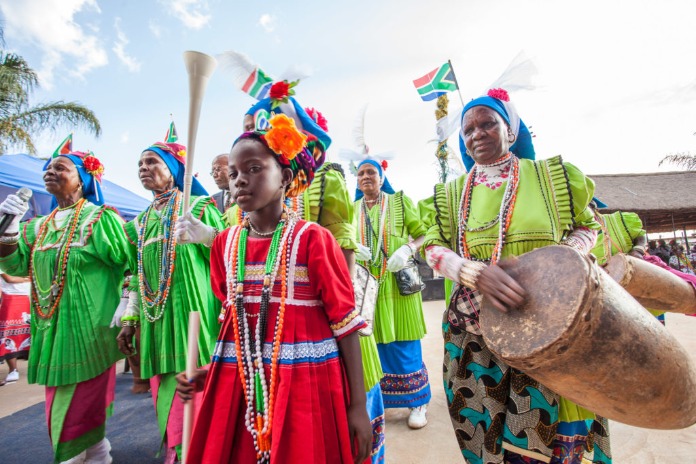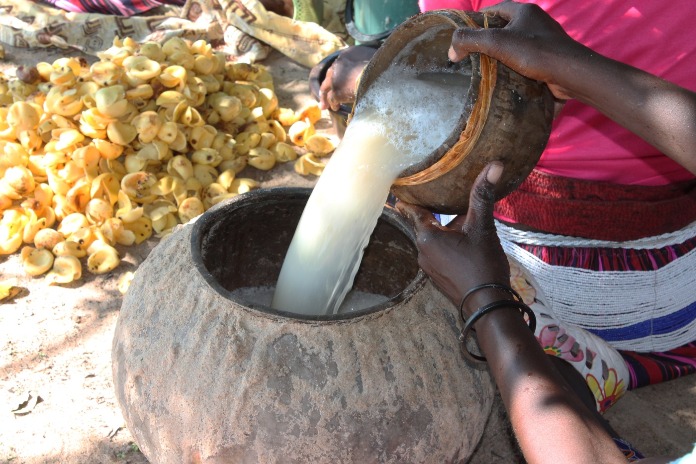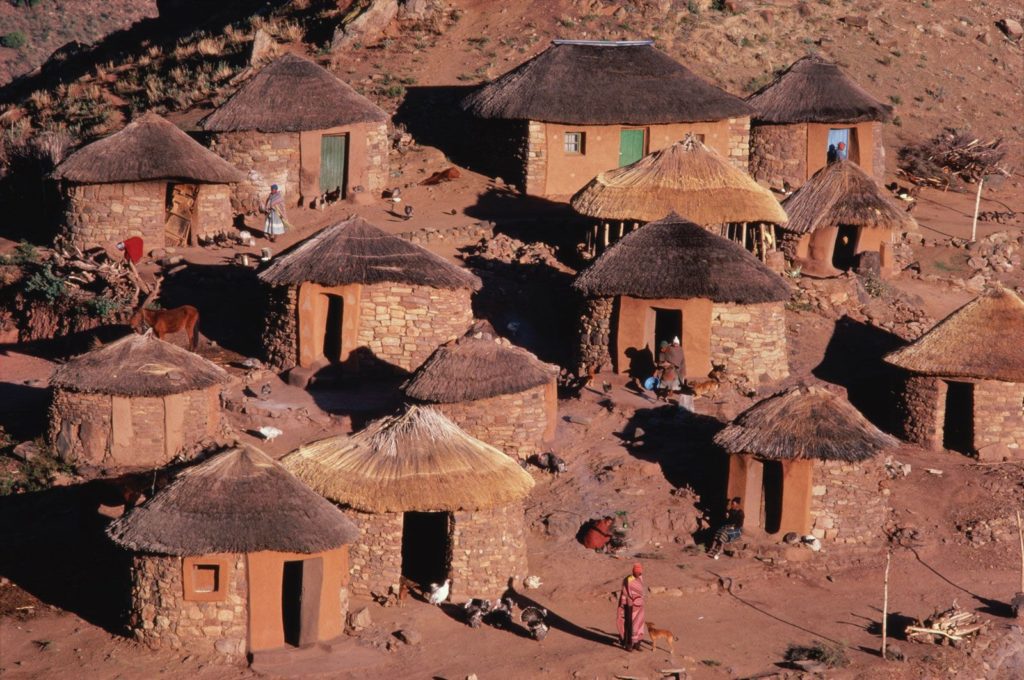Pedi is an ethnic group in South Africa that makes up about 4,972,000 of the population of the country, and 14,000 of them can be found Botswana. They speak the Pedi or Sapedi dialect but it should be noted that their language has a certain similarity to the Northern Sotho language, however, they are not the same. Apart from being one of the major black ethnic groups in South Africa, this ethnic group – the Pedi people – has also produced some notable people like South Africa’s third black president, Kgalema Petrus Motlanthe, and leader of the Economic Freedom Fighters (EFF), Julius Malema.
Just like what is obtainable in most ethnic groups in Africa as a whole, Bapedi or Pedi people are very rich in culture, ranging from their traditional beliefs, traditional foods, wedding and burial rites, as well as age rites. Although Christianity is the religion of most Pedi people, some of them are srtill very much involved in African traditional religion. So far, the influence of civilization and modern technology has done litlle to change the people’s inclination to their tradional practices. If you wish to know about Pedi culture, tradition, and belief, this post will introduce you to all you need to know.
Brief History Of The Pedi People
Every community has special myths and legend that can be used to trace their origin and the Pedi people are no exception. Pedi people are believed to have originated from Tswana and are descendants of Kgatla (Bakgatla). Kgatla (Bakgatla) is a Tswana clan that migrated to Bapedi in the 1700. Today, Bopedi is known as Limpopo. They are the first Sotho-Tswana people to be called Basotho. Pedi people are found mostly in the northern provinces of South Africa, in Limpopo and the northern part of Mpumalanga.
Around 1650, the Pedi people were majorly located around Steelpoort River, and they remained there for many generations. That was where they gained their cultural and linguistic homogeneity. It was only around the 18th century that they began to gain control over the regions around them and gained Pedi paramountcy by bringing other chiefdoms under their control.

Around 1780–1820, the Pedi political entity was ruled by King Thulare, but under his rule, the Pedi power was looked down upon by invaders from the Southeast called Ndwandwe. However, when Sekwati, King Thulare’s son took over, the political entity was stabilized again. When Sekhukhune I, son of Sekwati began his rule, he refused to pay tax to the Transvaal government. This led to the First Sekhukhune War which lasted a couple of months as the Transvaal government declared war against his kingdom (from May to August) in 1876. However, he was victorious, and in 1877, the conditions for peace were met and peace was restored.
After the British annexed the Transvaal in April 1877, they attacked Sekhukhune again in the Second Sekhukhune War and after repelling several attacks, he was arrested in December 1879. After South Africa’s first war, Sekhukhune was released in 1881 but was murdered by his stepbrother, Mampuru II. During the time of the apartheid in 1885, the Transvaal Republic’s Native Location Commission set aside 1,000 square kilometers of land for the Pedi people.
Exploring the Pedi Culture and Traditional Beliefs
Pedi culture is quite diverse, consolidated by years of strong traditional belief systems and lifestyles. Below, we take a look at a number of significant Pedi traditions.
Pedi People Used To Engage In Patrilocal and Polygyny Marriages
Marriage among the Pedi people used to be Patrilocal, this is a type of marriage where the couple lived with the husband’s family. Polygamy was more common among those who were rich. They preferred cousin marriage, that is, getting married to their cousins, especially the ruling and chiefly families.
They saw this as a way to recycle bridal wealth. Cousin marriage implied that both the bride and groom’s family already had close connections, the bridal wealth obtained from the daughter’s marriage was used to get a bride for her brother, in order to pay his sister, he would have to give his daughter in marriage to her son.
With the introduction of Christianity and civilization, cousin marriage is rarely practiced, and polygamy has also become rare. Separation from a spouse has now become common and some women do not bother getting married, they just raise them in small households, headed by a woman.
Modern Pedi Marriage
Although Christianity has now become one of the major religions among the Pedi people, Pedi traditional marriage does not take place in a church. It still takes place in the house of either the bride or groom’s parents.
Before the wedding day, the family of the bride and groom meet to discuss the wedding plan and the bride price. It is common for the bride’s family to request items like livestock and money from the groom’s family in exchange for their daughter. They can even decide to request liquor, properties, gifts, vouchers, and household appliances.
The bride’s traditional wedding dress is usually made of cow’s hide, but most modern brides prefer to wear attires that are up to date with current fashion trends. The grooms, on the other hand, can decide to wear a suit. On the traditional wedding day, the bride goes to the river to fetch water and collect wood for the ceremony. Completion of the task laid out for her implies that she is now ready to meet her husband.
During the ceremony, as she walks to meet her husband, her grandmother moves in front of her, to sweep the floor, this means “clearing the way”. Immediately after the marital rites are completed and the couples are now married, well-wishers begin to congratulate them and a sheep or cow is slaughtered and shared equally among both families. After all of these, traditional music is played and people begin to eat, dance, and make merry.
Pedi Birth Rituals
When a Pedi woman gets pregnant, she is expected to give birth to the child in her family house, after which she returns to her husband’s house. Her family is expected to contribute meat and beer for a celebration.
If the child is her first child, as a way of recognizing her status as a new mother, her husband builds her own homestead. If a child is born to the chief, the villagers go to the royal house to give presents to the child, and the chief’s servant goes around the village to announce the day and time for a party where the villagers come to eat and rejoice with the chief.
Pedi Burial Rites
Although Pedi people share common beliefs and traditions with some other tribes in South Africa, they are known to be a little more strict with their customs. It is the belief of the Pedi people that they can speak to their god. They believe that they speak to god through their ancestors, and in order to relate a message through their ancestors, traditional rites like pouring liquor and even sacrificing animals are done.
It is also their belief that as a result of the link their ancestors have with their god, it is paramount that all funeral rites must be strictly adhered to. One of these funeral rites is waiting for seven days before burying a lost one. In the course of the seven days period, plans are made for the funeral and family members are allowed to see the dead body.
The corpse is usually covered with cowhide and everybody is given the opportunity to see the body one last time before it is finally buried. When a chief dies, the death is usually kept secret for many months, even after the burial. Chiefs are also buried with at least two of their councilors.
Pedi Coming-Of-Age Rites
In order to differentiate the lifecycle of each gender, the Pedi boys and girls usually have to go through an initiation. For Pedi boys, initiation and circumcision take place every five years at an initiation school known as Koma.
This initiation was a means of stratifying the boys into groups, and each group bore the name of the leader. The members of each group were expected to remain loyal to each other throughout their lifetime, and as they grew older, they usually traveled together in search of jobs in mines or farms.
While the boys are younger, they spend most of their time in outposts, looking after cattle under the guidance and company of older youths and their peers. Two years after the boys are initiated, girls attend their own initiation school (Koma), and are grouped into regiments known as ditswa-bothuku.
Among the Pedi people today, initiation is still practiced and serves as a means of income for chiefs. There are also private entrepreneurs who have established their own initiation schools where the chiefs do not have control over.
Pedi Music
Songs have always been an important part of the Pedi culture. They were known to always sing together while working, as they believed that it helped them work faster. Of all the songs they sang, the ones that had to do with killing a lion to become a man were more prominent. However, the act of killing a lion has become so rare and unusual.
In the past, if a man kills a lion, the chief rewards him by giving his daughter to the man in marriage. The Pedi people have different types of traditional music which are played by different gender and age grades. These types of cultural music include:
- Makgakgasa: Played by older women
- Kiba/Dinaka: Mostly played by boys and men joined by women.
- Mmatšhidi: Played by older men and women
- Mpepetlwane: Played by young girls
Mmino wa Setso, a Pedi traditional music has a six-note scale and comes in different categories depending on the function. These categories include:
Mmino wa bana
This category of Pedi Music is mostly played by children, it is said to have a general social function, educational validity, and musicological elements.
Dinaka/Kiba
Dinaka/Kiba is one of the most popular music genres among the Pedi people. It has gone beyond being a rural type of music and is now accepted by migrants. When men play Dinaka, each player played an aluminum pipe of a different pitch blown from the end and known locally as Naka. As they play together, they produce harmonized sound and melody that is similar to traditional songs.
Alternative to Dinaka/Kiba
This category involves traditional kneeling dancing that has to do with women chanting, kneeling, dancing, and shaking their breasts. The lead singer steers the song while the others respond with the chorus. The song is usually accompanied by an ensemble of drums known as Meropa. This type of dance is also common among women from Sotho, Tswana, and Nguni.
The drums used in the past were made of wood, but in recent times, they are made of oil drums and milk-urns. This genre of music is usually used for celebrations like weddings.
Pedi Culture Clothing
One of the areas of Pedi culture that says a lot about their rich heritage is their cultural clothing. The colors, the patterns, the beadwork, and the designs say a lot about the creativity of the Pedi people.
Pedi men are known to wear kilts, white sneakers, and white polo or singlets. They also wear beads around their neck and arms. While the women wear maxi dresses, pleated blouses, and calf-length skirts. Embroidery and ribbon trimming is usually used to design their clothes.
Women also used to wear front and back aprons known as ntepa and lebole respectively. But recently, this apron is no longer used, however, women have added washcloths that have a semblance of the apron to their traditional attires. Here are some amazing Pedi traditional attires.
In recent times, women who do not want to wear the core Pedi traditional attire can modernize it to suit modern trends. Here are some modern Pedi traditional attires.
Pedi Food
Pedi cultural heritage also includes their kind of food. Although civilization has changed a lot, it has not changed the core traditional Pedi cuisines, which are mostly made up of fresh vegetables, meat, and traditional beer. Here are some palatable Pedi cuisines.
Tlhotlwa
Tlhotlwa is a Pedi traditional beer that is made of sorghum and brewed traditionally by elderly village women. This creamy beer is served in clay pots at events like weddings.
Ingredients
Mabele and Water
Procedure
- Mabele, also known as Sorghum mealie meal is mixed in hot water
- The mixture is allowed to ferment by keeping it in a warm place
- After the fermentation process, it is brewed by old village women
- Your Tlhotlwa is ready to be served and should be enjoyed using Sego
Mala Mogodu
Mala Mogodu is another palatable Pedi meal. It is easy to prepare but takes quite a long time. Depending on how fast you are, preparing this meal takes up to 3 to 4 hours.
Ingredients
- Tripe (1kg)
- Water (4 liters)
- Medium-sized onion
- Vegetable oil (1 liter)
- Red chili (1 large one)
- Garlic (one tablespoon of crushed ginger
- Garam masala (2 tablespoons)
- Paprika (1 tablespoon)
- Chopped tomatoes (1 x 400 g can)
- Amasi or plain yogurt (1 cup)
- Chopped and garnished parsley (2 tablespoons)
- Coarser salt
Procedure
- Put the tripe in a large bowl
- Sprinkle the coarser salt on the tripe
- Add 2 liters of water
- Allow soaking for an hour
- Rinse under running water
- Cut the tripe into small biteable pieces
- Pour tripe into a saucepan
- Season with salt and pepper and add the remaining 2 liters of water
- Allow boiling under low heat for about 3 hours, until it is tender
- Drain the water away and keep it aside
- Heat the oil in a large pan
- Add onion, chili, and garlic into the oil
- Add the masala, paprika, and bay leaves
- Season with salt and pepper, stir until the onion is cooked
- Add the tomatoes, stir then allow to cool cook for about 2 minutes
- Add the amasi or yogurt and store thoroughly, until it becomes thick, if it is not thick, allow to heat under low heat for some minutes
- Add the tripe and allow to cook for another 10 minutes
- Garnish with parsley
- You can serve with papa or starch
Pedi people also serve a lot of vegetables like spinach, butternut, green beans, cabbage, beetroot, and potatoes at their ceremonies.
Pedi Language
The language spoken by the Pedi people is known as Sepedi, and it is usually mistaken to be the same as the language spoken by Northern Sotho. This confusion about the two languages came about as a result of the fact that missionaries who developed the orthography for Northern Sotho mostly had contact with the Pedi people. Nonetheless, these are two different groups with separate languages.
However, Sepedi is more closely related to the Tswana language. Sepedi is spoken by people in the Northern part of South Africa like Limpopo, Northwest province, and Gauteng.
Other Noteworthy Things To Know About Bapedi
Before civilization, Pedi people used to live in huts. They also practised communal living and lived in settlements. Each household built its huts around a central place. This central area was used as a meeting place, graveyard, ancestral shrine, and byre. In polygynous homes, each wife had her own hut and the huts were built based on seniority. As the children grew older, boys and girls had to stay in different rooms. In recent times, most people no longer like to live in huts, and prefer to build modern houses, which are more comfortable but more expensive to build. You can only see people living in huts among the less privileged in the community.
Another noteworthy thing about the Pedi people is that they believe in the existence of God, who they communicate with through their ancestors. They are able to achieve this communication with God with the help of a diviner known as Ngaka. The position of the ngaka is usually inherited patrilineally. To identify a person whom God has chosen for this position, the spirit is often manifested in the individual by illnesses and by violent possession of the person’s body by the spirit. This will likely keep the person unconfortable until they answer the call.
When a person begins to show signs of being a ngaka, the only option is usually to train that person as a diviner. However, in recent times, more people have started showing traits of being diviners that people are beginning to suspect that it is being faked as a result of greed. Notwithstanding, the call to become an ngaka is considered a privilege among the Pedi people.
To add more color to the beautiful culture of this amazing group, Pedi people also have their unique arts, their art is seen in their style of metal forging, pottery, woodwork, beading, drums, and painting. Despite the influence of modern technology and civilization, the Pedi people still maintain a good part of their culture which is admired on the African continent.
Some Notable Pedi People in South Africa
As mentioned before, the third black president of South Africa, Kgalema Petrus Motlanthe, is of this ethnic group and so is Julius Malema, a former president of the African National Congress Youth League (ANCYL) and leader of the Economic Freedom Fighters (EFF). Malema is currently one of the forces to reckon with in the political arena of South Africa. A Member of Parliament, he has championed many protests against bad governance and discrimination against black people in the country. Thus far, he is seen across many quaters as a prospective leader of the country, even though many still beg to differ.
Not just politics, other aspects of the economy and society have felt the impact of Pedi people, including the entertainment industry. Here are some other Pedi people who have made name for themselves and their tribe in South Africa.
- Master KG – Popular South African musician
- King Monada – Famous Artist
- Judith Sephuma – Popular musician
- Sello Rasethaba – Businessman
This list does not exhaust the number of talenteed and influential people under this ethnic community. There are still many other people from this ethnic group that we could not mention.



